Argišti II, son of Rusa
Introduction
Argišti II is the son of a king named Rusa. He is a contemporary of the Assyrian king Sargon II and possibly also of Sennacherib. His reign probably began 709 BC, its end is yet unknown (Fuchs 2013: 154-157). According to Fuchs (l. c.), Argišti II is the Urartian king who fought the Cimmerian invasion and suffered a crushing defeat while, according to Roaf, the most likely – but not the only possible – scenario is that Argišti II succeeded Rusa, son of Sarduri, after he was beaten by the Cimmerians. The following overview follows Roaf's interpretation (for further information see the portal page "Urartian Rulers and Chronology").
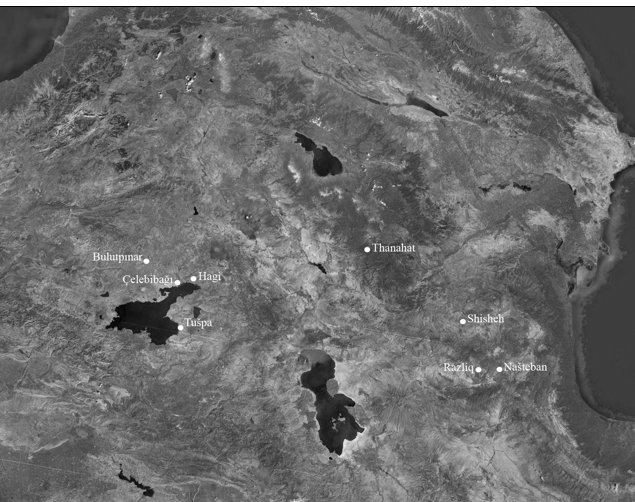
Map showing the distribution of the stone inscriptions of Argišti II, son of Rusa, in: Mirjo Salvini, CTU I: 534 .
Royal titles
(I am) Argišti, mighty king, king of the lands, king of the Bia lands, king of kings, lord of Ṭušpa-City. (A 11-4, lines 11-12)
Building activities
In his inscriptions, Argišti II presents himself as a builder and founder of fortresses and settlements, and as a king who put great effort into developing old and newly conquered territories. This also includes the restoration of already existing buildings and infrastructure.
In an inscription engraved in a stelae found in the mosque of Çelebibağı in the northeast of Lake Van (11-1), and another stele inscription from the same region (A 11-2 from Hagi) Argišti reports to have cultivated the land near the city NA₄.ANŠE (lit. "stone donkey") in front of Mount Quria. Similar to other Urartian rulers, he stresses that the land was previously untouched "not even a field of grain, a vineyard or a fruit orchard ... no canal had (ever) been dug there". The region also lacked a certain amudi. In order to irrigate the land, Argišti built an artificial lake and a canal. Argišti further states that he received people from the city Argištiḫinili "in front of the land Artarapša" and founded settlements there (A 11-2 r. 1). In addition, A 11-1 contains an instruction for the performance of a sacrificial ritual in the region.
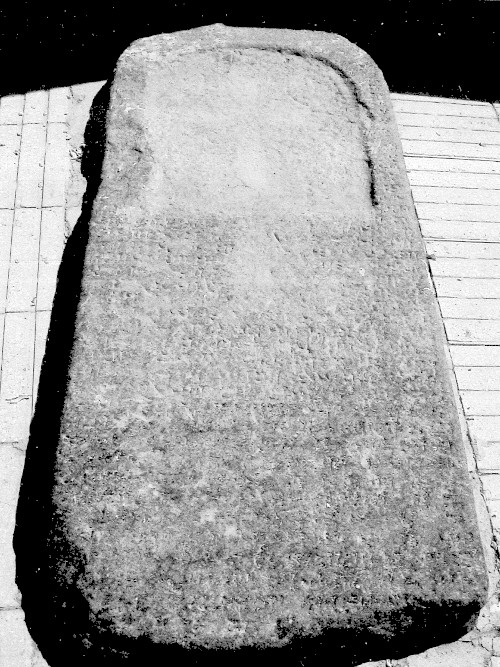
Stele from the mosque of Çelebibaği with the inscription A 11-1, in: Mirjo Salvini, CTU III: 324.
Furthermore, an inscription on a stele from Bulutpınarı in the North of Lake Van (A 11-8) records the construction of a bridge across the river Arṣiani and a road leading to the river (A 11-8 obv. lines 5b-24).
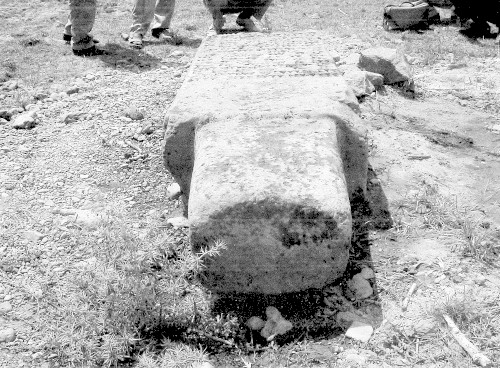
Stele from Bulutpınarı with the inscription A 11-8, in: Mirjo Salvini, CTU III: 335.
Argisti was also active further east, in the region of Iranian Azerbaijan. According to a rock inscription from Razliq in Iranian Azerbaijan (A 11-4), Argišti conquered the lands Girdu, Gituḫani and Ṭuišdu, as well as the city Rudutarni and rebuilt the fortress there, renaming it "stronghold of Argišti" (A 11-4 lines 5-10).
Another rock inscription (A 11-6), located in Shisheh in Iranian Azerbaijan, informs us about the building of another fortress in the region named "fortress of the god Ḫaldi" (A 11-6 lines 9-12).
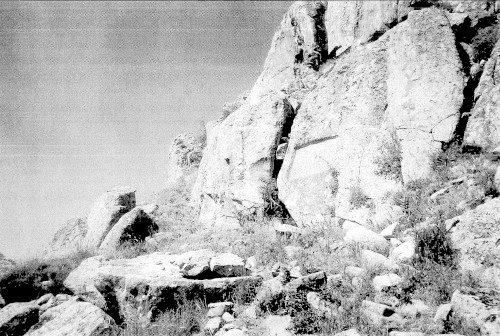
Rock inscription from Shisheh in Iranian Azerbaijan with the inscription A 11-6, in: Mirjo Salvini, CTU III: 334.
Argišti's most important building project was surely the settlement and the fortress on the hill of Altıntepe. Among the archaeological remains of the site are a well-preserved tower temple, a palace, and several tombs. The settlement is located at the westernmost edge of the territory controlled by the Urartians. Here some inscriptions in Neo-Hittite hieroglyphic writing have also come to light, indicating that there was an interrelation between the two cultures. Two fragments of bronze plaques (B 11-5) which have been found in one of the tombs provide information about the dating of the buildings as they are engraved with inscriptions of Argišti, son of Rusa (Salvini 1995: 100-101, Seidl 2004: 40 with further literature).
In several of his inscriptions on stelae, Argišti points out that he built them for the god Ḫaldi (A 11-1, A 11-2, A 11-3). The stela bearing the inscription A 11-3 was found in the ruin of the Armenian church of Thanahat where it was re-used as a hačkar, i.e. a Christian cross stone.
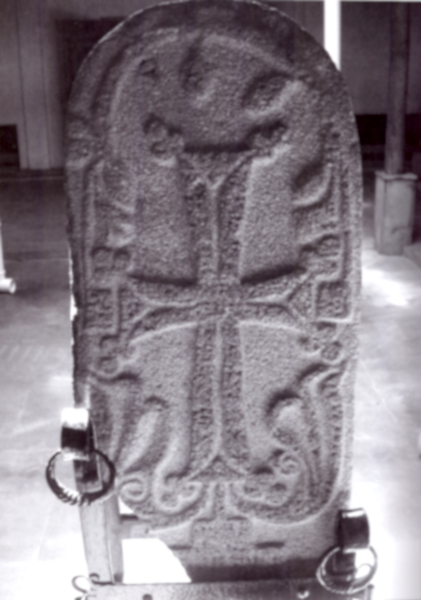
Stele from Tanahat (Sissian) with the inscription A 11-3, re-used as a Christian cross stone (hačkar), in: Mirjo Salvini, CTU III: 328.
Agricultural infrastructure and irrigation systems
Reports of the establishment of agricultural infrastructure and irrigation systems are given in the inscriptions A 11-1, from Çelebibaği, and A 11-2, from Hagi at the northeastern shore of Lake Van (see further above).
Military activities
Argišti II turned to the northeast, conquering lands such as Buqu, situated in Northern Iran, as rock inscriptions at the foot of Mt. Sabalan state (A 11-4 and 5). There he built the fortress "stronghold of Argišti" to secure the region.
The stele of Thanahat bearing the inscription A 11-3 in Armenia proves the presence of Urartu in this region in the time of Argišti II, albeit the actual nature of Urartian activity there remains unclear save for the conquest of some lands and settlements. The campaign reported in A 11-3 may have aimed for control of the mountain passes leading north to the region of Nagorno Karabach (Salvini 1995: 102).
Religious activities
The most important religious activity stated in Argišti's inscriptions is the establishment of an extensive offering ritual, which was apparently intended to ensure divine support for the water supply and the fertility of the land cultivated by him in the northeast of Lake Van (A 11-1). Argisti also refers to the god Ḫaldi, the weather-god Teišeba, the sun-god Šiuini, and other deities of the Urartian pantheon in curse formulae aiming at preventing someone to harm the inscription or the inscribed object (A 11-2, A 11-3, A 11-4, A 11-5, A 11-6, A 11-8)
Miscellanea
A 11-7 mentions a "garden of Išpili", not as a royal building project but rather as a landmark to illustrate the king's abilities as a bowman.
Inscriptions on metal objects
Bronze objects were found in Altıntepe (B 11-5a-b), Ayanis (B 11-3 to 4) and Yukarı Anzaf (B 11-1 to 2). Four of these objects are votive offerings to the god Ḫaldi in the form of a quiver (B 11-1), two shields (B 11-2 and 4) and a helmet (B 11-3). As has already been mentioned, the inscription B 11-5 on two fragments of a bronze plaque which has been found in tomb III at Altıntepe refers to Argišti, son of Rusa, as its owner.
Further reading
Birgit Christiansen
Birgit Christiansen, 'Argišti II, son of Rusa', Electronic Corpus of Urartian Texts (eCUT) Project, The eCUT Project, 2019 [http://oracc.museum.upenn.edu/ecut/urartianrulersandchronology/argitiiisonofrusaa11/]